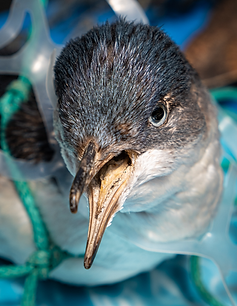
Proper Waste Disposal
Improper disposal of waste has the potential to cause significant damage to the ecosystem through toxins which leech into the soil and water. Most waste is not biodegradable meaning it will remain in the environment forever.
Proper waste disposal involves taking items which are no longer useful or have served their purpose, and discarding them in a way which reduces their impact on the environment and potentially creates new uses for the object. Waste products generally fit into three categories:
Recycling

Recycling is the process of taking certain waste items and converting them into products which can be used again. This includes items such as:
-
Empty plastic bottles
-
Cardboard boxes
-
Pizza boxes


Compost

Composting is the process of discarding biodegradable materials which can be safely
reintegrated into the natural environment.
This includes items such as:
-
Fruit peels
-
Food waste
-
Grass clippings


Waste

Garbage disposal is the process of safely discarding of waste materials which cannot
be composted or recycled.
This includes items such as:
-
Plastic wrap
-
Styrofoam
-
Broken glass


Why Properly Dispose of Waste?
When waste enters the environment without proper disposal, it can cause severe damage to the ecosystem and whatever lives in it.
Toxins that leach from trash left in the environment may harm the health of soil, poison drinking water and harm local wildlife.
Plastic items left in the environment could trap small animals, possibly harming or even killing them. Broken glass can easily cut wildlife and cause severe harm.
Additionally, trash left in an environment looks unappealing. Going for a hike and having to avoid stepping on broken glass, and passing by plastic bags and other waste is unpleasant and even hazardous.



For more information on how to properly dispose of household waste, check out the Island Waste Management Corporation website here.
Household Hazardous Waste
The term hazardous materials may conjure thoughts of chemistry labs and industry, but you likely have some sort of hazardous material in your home. You may even use them daily.
Household items such as bleach, oil/oil paints, insect repellent, and antifreeze all constitute hazardous materials and can cause significant damage to the environment if not disposed of properly. Household Hazardous Waste Falls into four general categories:

Explosive
These pressurized containers contain materials that can poison or damage living organisms: gas cylinders that carry propane or butane, and aerosol cans with unused product.

Poison
These items poison or damage living organisms: solvents, batteries, antifreeze, medications, pesticides, fertilizers, wood stains and preservatives, radiator coolants, compact fluorescent light bulbs, and any confirmed or suspected carcinogens.

Corrosive
These items eat away at surfaces, including the skin of humans or animals. Corrosive materials include bleach and household cleaners, rust removers, wax strippers, laundry stain removers, oven cleaners, drain cleaners, and automotive lead-acid batteries.

Flammable
These items burn easily and pose serious risk of igniting with minimal spark or heat. They include oils, fuels, paint thinners, contact cement, oil-based paints, insect repellent,
aerosol containers and furniture cleaners
Everyone has at least some of these substances around their house, so everyone has a role to play in protecting our water from toxic pollution. It might seem like these materials wouldn’t make much of an impact, but if every house, pollutes a little bit, it adds up to poor water for everyone.
